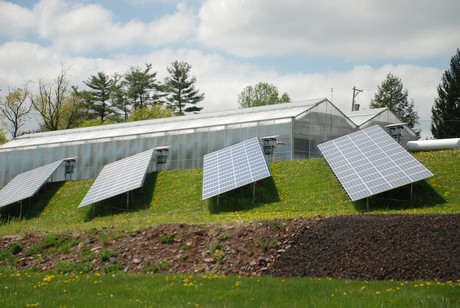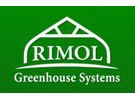Implementing sustainable alternatives for daily practices has become a high priority for many farmers and growers. Luckily for those seeking to lessen their negative environmental impact, eco-friendly solutions are becoming more widely available across a variety of industries, including horticulture.
There is a range of environmentally friendly tools and methods available to greenhouse owners that could change the way they run their operations, and these adjustments could be beneficial to more than just the greater good of our planet. From hydroponics to roll-up sides, sustainable growing practices could enable cultivators to decrease their consumption of non-renewable energy and other resources all while increasing their savings.
The key to unlocking remarkable savings, and downsizing your carbon footprint, could be the power source that’s consistently dominated the energy-saving conversation for years: solar power. Since the beginning of this decade, turning to solar power as a source of renewable energy has only been increasing in popularity and affordability. Today, it’s more cost-effective than ever, and many U.S. residents are taking advantage. According to the Solar Energy Industries Association, 2019 has already become a record-breaking year that saw the most solar ever installed in a single quarter.

Horticulturists know how important it is to harness the sun’s energy so their plants can thrive. Why not make use of all the energy the sun has to offer and support your financial status at the same time? Let’s explore one particular structure where solar energy can be extremely valuable and practical: high tunnels.
The High Tunnel: A Great Candidate for Solar
A high tunnel is a modular structure that can be customized to suit a variety of growing needs. The first high tunnels were simple in design, had no electricity, and came equipped with high sidewalls to ensure that large farming vehicles could come and go with ease. However, high tunnel designs today can vary in complexity, with some existing just as a greenhouse frame with a single layer of poly and roll-up curtains while others are fashioned with moveable capabilities, roof vents, year-round covering, an irrigation system, and heat.
Because they can be as sophisticated or as modest as you’d like, high tunnels can have a low start-up cost and quick ROI. They are also customizable to cater to the start or length of your growth cycle, able to provide protection for early- or late-season production or accommodate year-round growing.
Due to the structure’s ability to adapt for a grower’s crop of choice, the U.S. Department of Agriculture’s Natural Resource Conservation Service (NRCS) is studying the effectiveness of high tunnels as a means of producing crops outside of their season and native range. High tunnels are most commonly used for tomato production but have consequently been used to host a variety of other crops as well, including cucumbers, lettuce, strawberries, raspberries, herbs, and even cut flowers.
Customizable and able to combat unpredictable weather, high tunnels of any construction are a reliable choice to meet growing needs. By joining the malleability of the high tunnel with the increasingly affordable power of solar energy, that reliability could rise significantly.
For more information:
Rimol Greenhouse Systems
40 Londonderry Turnpike
Hooksett, NH 03106
T: (877) 746-6544
[email protected]
www.rimolgreenhouses.com
